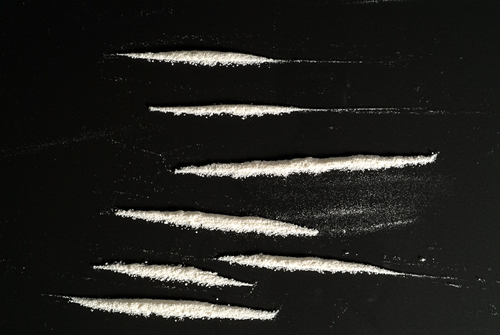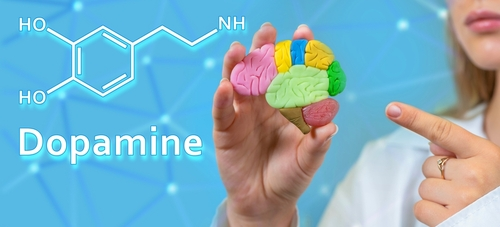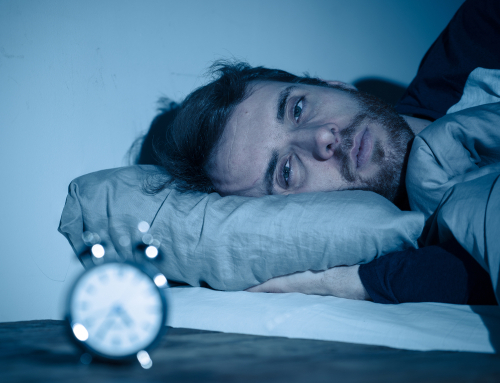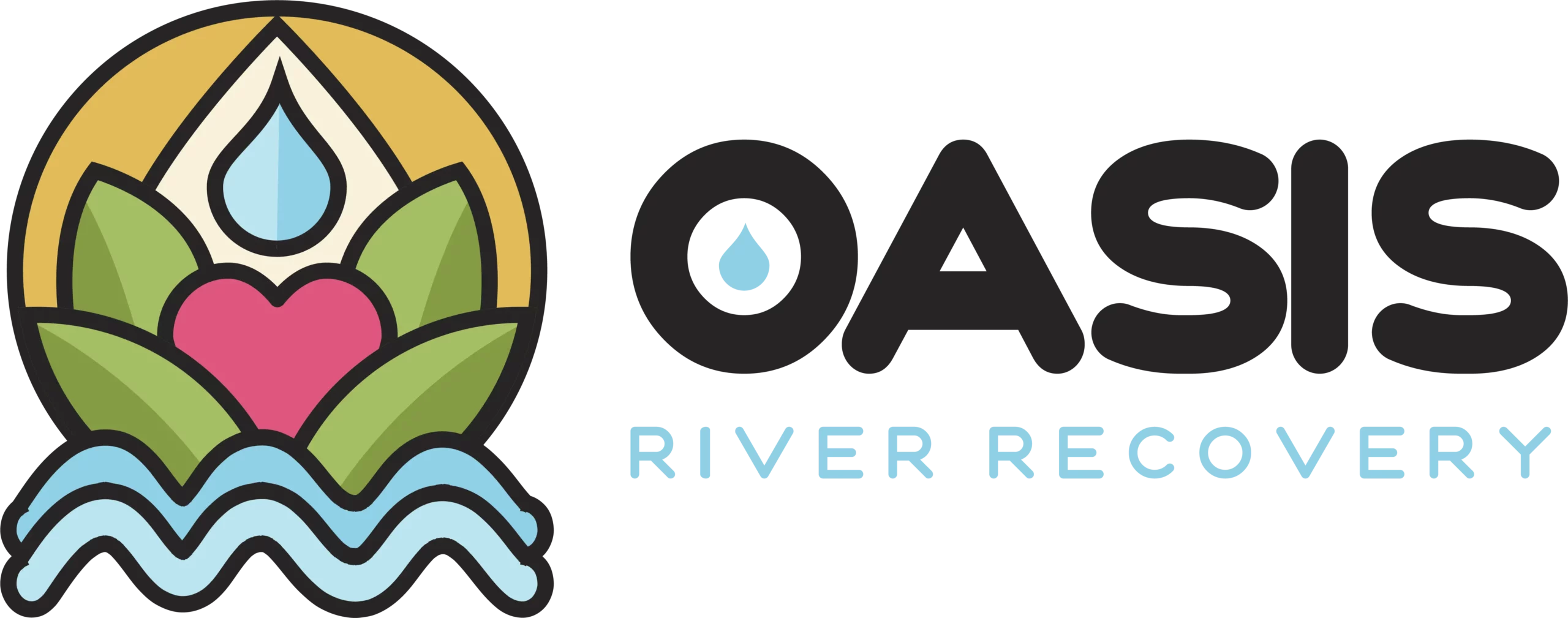Cocaine use symptoms can include anything from uncomfortable side effects like nose bleeds, sleeping issues, and anxiety to extreme and long-term health disorders like psychosis, high blood pressure, and addiction. While someone may try cocaine one or two times and notice little or no side effects, it’s this false sense of confidence and security that’s led over 1.4 million people to cocaine addiction.
This article covers everything about cocaine use symptoms, splitting them between behavioral, physical, and mental side effects. You’ll also learn how cocaine affects the brain and the most effective ways to treat cocaine addiction and abuse in you or a family member.

What Is Cocaine?
Cocaine is an illicit stimulant and controlled substance known to increase energy, attention span, heart rate, and breathing rate. Cocaine, also called “blow,” “coke,” and “snow,” is usually snorted, smoked, or injected and induces a short-lived but intense “high” by flooding the brain with dopamine. Dopamine is most notably involved in helping us feel pleasure or satisfaction as part of the brain’s reward system. When someone uses cocaine, the brain subconsciously links “pleasure” or “relief” with low-commitment, high-risk drug use.
Take Our Addiction Quiz For Recovery Insights
Cocaine And Mental Health
If you’re struggling with a mental health disorder along with substance use, there’s a chance you have co-occurring disorders. Also called dual diagnosis, co-occurring disorders are defined by the presence of a substance use disorder and concurrent mental health disorders caused or contributed by each other. Compared to tackling one health condition at a time, co-occurring disorders can be harder to manage without professional addiction treatment.
For example, cocaine’s interaction with dopamine can put individuals with attention deficit hyperactivity disorder (ADHD) at a higher risk of developing an addiction. This is due to ADHD’s impact on impulsivity, executive dysfunction, and sensitivity to rewards, including the reinforcing effects of stimulants. This is the main reason why medications like Adderall, Concerta, Ritalin, and other FDA-approved stimulants target dopamine levels as well, but in a controlled and medically safe dosage.
Additionally, untreated or undertreated ADHD is at high risk for stimulant, opioid, alcohol, and cannabis abuse, as users try to self-medicate and manage their symptoms. One problem with cocaine is the massive rush of dopamine, which is toxic to the brain and body. When there’s an excess of dopamine, the body’s response is to ‘down-regulate,’ essentially closing off dopamine receptors. This process leads to more cravings and heightened usage, with the body signaling a lack of response by closing off even more receptors. Overtime, cocaine’s desired effects are reduced and its health risks stay the same.

What Are The Effects Of Cocaine On The Brain?
Cocaine has several effects on the brain, chemically interacting and damaging important functions.
- Blocks neurotransmitter reuptake: Cocaine primarily works by blocking the reuptake of neurotransmitters, including dopamine, serotonin, and norepinephrine. Neurotransmitter reuptake is the process of reabsorbing these chemicals by the neuron that released them, terminating their signaling effects.
- Disrupts homeostasis: Cocaine increases the concentration of dopamine in the synapse, the gap between neurons, leading to an accumulation of dopamine that can trick the body into producing fewer neurotransmitters and disrupt its ability to reach homeostasis (a balanced functioning state). This is why most people with cocaine use disorders have difficulty with mood regulation and relaxation.
- Impairs enzymatic reactions: Dopamine is synthesized from precursor molecules in a series of enzymatic reactions. As the brain adapts to excess dopamine, the natural signaling pathways for neurotransmitters can become impaired, and chronic exposure to high dopamine levels can affect the regulation of these enzymes.
- Decreases dopamine sensitivity: Additionally, overstimulation can make it challenging for individuals to experience pleasure from everyday activities that typically release dopamine, such as exercise, food, socializing, or entertainment. In response to the abundance of dopamine, the brain may reduce the number of receptors or decrease their sensitivity. This downregulation is a form of neuroadaptation and contributes to the development of tolerance.
- Builds tolerance: Once someone develops a tolerance to cocaine, the risk of overdosing increases as their body isn’t able to physically gauge how much of the drug is working. Developing a tolerance to an addictive substance is one of the 11 qualifying criteria for a substance use disorder diagnosis. If you’re developing a tolerance to cocaine, talk to a professional as soon as possible.

5 Behavioral Cocaine Use Symptoms
If you or a family member is exhibiting any of the following signs, call an addiction treatment center right away. The following symptoms can be attributed to cocaine’s effects on behavior, actions, and beliefs.
- Lying about location, social circle, and activities: Individuals abusing cocaine may conceal their location or social circle by shutting off their mobile location, asking friends to support their story, or bailing on seemingly planned activities.
- Trying but failing to quit using cocaine: It’s common to believe you can quit using cocaine whenever you choose, but the reality could be much harsher to accept. Failing to quit a substance on your own falls under the 11 signs of substance use disorder.
- Increased energy: You or a loved one might display signs of mania or increased energy during seemingly mundane activities or events. Because of its stimulating effects, some introverted and quieter people use cocaine to socialize and open up.
- Reckless and risky behaviors: Cocaine can heighten alertness and confidence, which can lead to risky behavior, such as driving, operating a vehicle or special equipment, or performing a reckless stunt.
- Borrowing or stealing money: Cocaine addiction can be an expensive habit that can drain a user’s income and savings, leading them to steal or borrow money to fund their next high.
Behavioral symptoms of drug use can be treated using evidence-based and holistic therapy methods, such as cognitive behavioral therapy (CBT), trauma-informed therapy, and adventure therapy. Therapy methods like CBT are essential during addiction treatment to help individuals reframe their cognitive beliefs and views on drug use and unhealthy coping skills.
Connect With Us Now
Reach out to us now for immediate support, or let us know the best time to contact you through our confidential callback service. Your journey to healing is just a conversation away.
7 Mental Cocaine Use Symptoms
- Impaired decision-making capabilities: A friend or family member using cocaine may not consider the weight of their actions and continue to abuse cocaine despite negative side effects.
- Short-lived euphoria: Cocaine users are usually looking to induce a sense of euphoria and lighten their mood. However, the desired effects of cocaine might not even last an hour.
- Restlessness and agitation: Someone using cocaine might appear restless, hyperactive, or unable to concentrate on thoughts or activities. Also, cocaine use heightens alertness and can overload our sensitivity to light, sounds, and feelings. Once cocaine’s effects fade, these uncomfortable sensations can increase even more. This comedown phase is notoriously known as the “crash.”
- Psychosis: There are cases where cocaine use produced a paranoid psychosis similar to acute paranoid schizophrenia. One study discovered that males are more prone to developing psychosis from cocaine use, and there was no notable difference in how much cocaine they used, both recently and throughout their lives, before experiencing psychosis.
- Depression and anxiety: Chronic cocaine use can disrupt the brain’s ability to produce dopamine, an important part of motivation and mental drive. This can lead users down a path of feeling unmotivated and unwilling to perform any activities that don’t induce instant dopamine (like cocaine use). This extreme loss of interest, enjoyment, or pleasure from life’s experiences is also called anhedonia.
- Mood swings: Individuals using cocaine as a coping mechanism for stress or emotional challenges may experience mood swings as the drug’s effects fluctuate and as the underlying issues persist. Most people use cocaine because they want to feel motivated or excited, feelings they struggle with because of an undiagnosed mental health condition. The Substance Abuse and Mental Health Services Administration reported that 1 in 4 adults living with a serious mental health disorder (bipolar, generalized anxiety, ADHD) also have a substance use disorder.
- Withdrawal: Once the brain develops a dependency on cocaine’s psychological effects, it can experience withdrawal symptoms if drug use is suddenly stopped or lowered.
These cognitive and psychosocial symptoms of cocaine use can be treated through comprehensive addiction treatment that includes medical detox, full or part-time treatment, and continued aftercare support.

10 Physical Cocaine Use Symptoms
- Rapid heart rate: Like other stimulants, cocaine increases adrenaline, norepinephrine, vasoconstriction, and oxygen demand, causing the body to increase its heart rate and blood flow.
- Inconsistent sleep schedule: Cocaine users may be awake throughout the night or sleep in during the day.
- Insomnia: Some cocaine users may not be able to sleep after using even the tiniest amount.
- Dilated pupils: Cocaine’s impact on the sympathetic nervous system (SNS) triggers our fight-or-flight response and heightens alertness. Additionally, norepinephrine activates alpha-1 adrenergic receptors on the muscles surrounding the iris, causing the radial muscles of the iris to contract, leading to pupil dilation.
- Runny nose and nosebleeds: Snorting cocaine (one of the most common administration methods) can damage and irritate the sensitive tissue and cartilage inside the nose. Over time, chronic cocaine use can eventually eat away at the nose and lead to nasal skin necrosis.
- Excessive perspiration: Cocaine use stimulates the sympathetic nervous system, increasing sweat production by activating sweat glands.
- Elevated body temperature: By stimulating the central nervous system (CNS), cocaine disrupts the body’s thermoregulation, leading to elevated metabolic activity and heat production.
- High blood pressure: Cocaine raises blood pressure through its sympathomimetic effects, triggering the release of neurotransmitters like norepinephrine, which constrict blood vessels and increase cardiac output.
- Loss of appetite: Cocaine induces appetite loss by suppressing the activity of appetite-regulating neurotransmitters and affecting the brain’s reward system, diminishing the desire for food.
- Energy bursts: Someone abusing cocaine might display intense bursts of energy at strange moments, usually after they’ve returned from a secluded room or area. If you notice a friend or family member exhibiting any of these physical cocaine use symptoms, talk to them and see if they’ll consider professional treatment.
Are You Covered For Treatment?
Oasis River Recovery partners with numerous private insurance providers. Our team is committed to assisting you in quickly and effortlessly verifying your insurance coverage for treatment.
Cocaine Addiction Treatment
At Oasis River Recovery, we pride ourselves on offering evidence-based and holistic healing modalities that treat every aspect of cocaine addiction and abuse. Our treatment center specifically provides partial hospitalization and on-site sober living facilities off the Ocoee River in Ocoee, Tennessee. Clients are immersed in nature and actively partake in breathwork classes, hikes, kayaking trips, and other excursions that tie into individualized treatment plans.
Some of our treatment therapies and healing modalities include:
- Individual therapy
- Group therapy
- Adventure therapy
- Art therapy
- Trauma-informed yoga
- Breathwork
- and more!
If you or someone you know is using cocaine or displaying any signs of drug use, contact Oasis River Recovery Center. While Oasis River specifically focuses on holistic and experiential treatment, our partnership with Health Care Alliance North America gives clients access to five other centers offering various rehab programs and therapy methods. Call today, and one of our admissions agents can help you get started.
Reviewed By A Specialist In The Field




